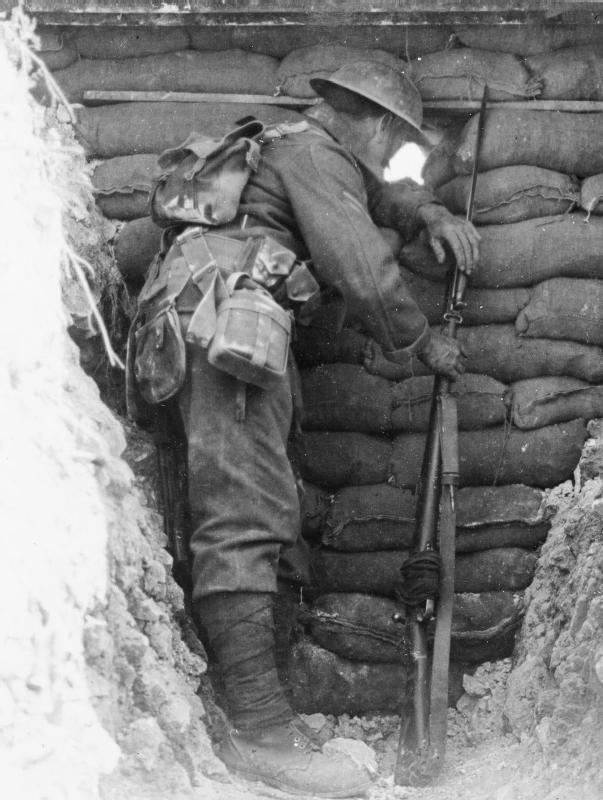 | ||
The 1908 Pattern Web Infantry Equipment was an innovative type of webbing equipment issued to the British Army during World War I.
Contents
Origins
During the Second Boer War of 1899–1902, the standard British Army set of personal equipment, comprising a belt, haversack and ammunition pouches, was the leather Slade-Wallace Equipment, which had been introduced in 1888. It proved unsuitable for holding modern ammunition, which was carried in clip chargers instead of individual rounds, and its buffalo hide leather tended to deteriorate during long periods in the field. A review of the British shortcomings of the war was conducted by the 1903 Royal Commission on the War in South Africa, which heard evidence that the Slade-Wallace equipment was "an absurdity" and "cumbersome, heavy and badly balanced". As a stop-gap measure, the leather 1903 Bandolier Equipment, based on that used by the Boer Commandos, was issued, but it quickly proved to be unsuitable for infantry use.
In 1906, Major Burrows of the Royal Irish Fusiliers working with the Mills Equipment Company, presented a design for a new set of equipment. The American parent company of Mills had previously produced woven cotton webbing equipment for the US Army, but no European army had yet adopted it. The new Webb-Burrows equipment, initially known as "the Aldershot design", was presented to a committee chaired by the Surgeon-General, which in turn recommended trials at home and abroad. Following the success of these trials, the webbing equipment was accepted by the Army Council in December 1907.
Description
The 1908 equipment, when fully assembled, formed a single piece and could be put on or taken off like a jacket. Ammunition was stored in two sets of pouches attached to the belt at the front, and the straps from these passed over the shoulders, crossing diagonally at the back. The back pack, or "valise", was attached to these diagonal straps, thus spreading its weight. The "D" shaped buckles and the strap ends were made of brass. The whole set consisted of:
The equipment could be configured in two different ways; for "Full Marching Order" the large pack or valise was worn on the back and the haversack was worn hanging by the left hip. In "Battle Order" which was intended to be worn in combat, the valise was detached and the haversack was attached to the back in its place, connected to the ammunition pouches by separate straps.
In theory, an infantryman's Full Marching Order weighed 57 pounds 2½ ounces (25.9 kilograms), and the Battle Order weighed 49 pounds 2 ounces (22.3 kilograms), both including the bayonet and 150 rounds of ammunition but excluding the Lee-Enfield rifle. However, in wartime conditions, the addition of new equipment such as the gas mask, steel helmet and hand grenades, together with the need to carry extra ammunition, rations and defence stores, meant that infantrymen could sometimes go into battle carrying loads estimated at up to 114 pounds (52 kilograms).
Service
The 1908 Pattern Web Equipment was the main equipment with which the British and Imperial armies fought the First World War. The inability of the Mills factory to keep up with demand led to the introduction of a leather version, the 1914 Pattern Leather Equipment, which was intended for training and second line troops, but often found its way into the front lines. Twenty years after the end of that conflict, the 1908 webbing was replaced by the 1937 Pattern Web Equipment. However, the massive expansion of the British and Commonwealth armed forces immediately before and after the outbreak of World War II meant that the 1908 webbing continued in front line use for some time. Some British infantry units in India and Hong Kong were still using the 1908 webbing in 1941. The valise and haversack from the 1908 webbing continued to be used in the 1938 webbing.
